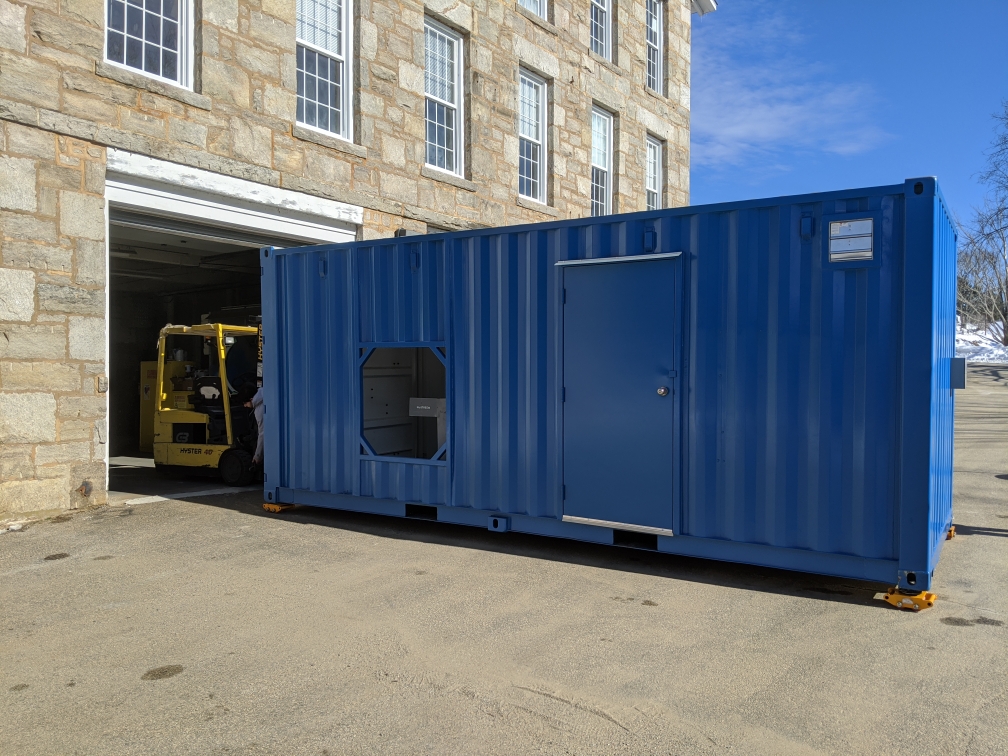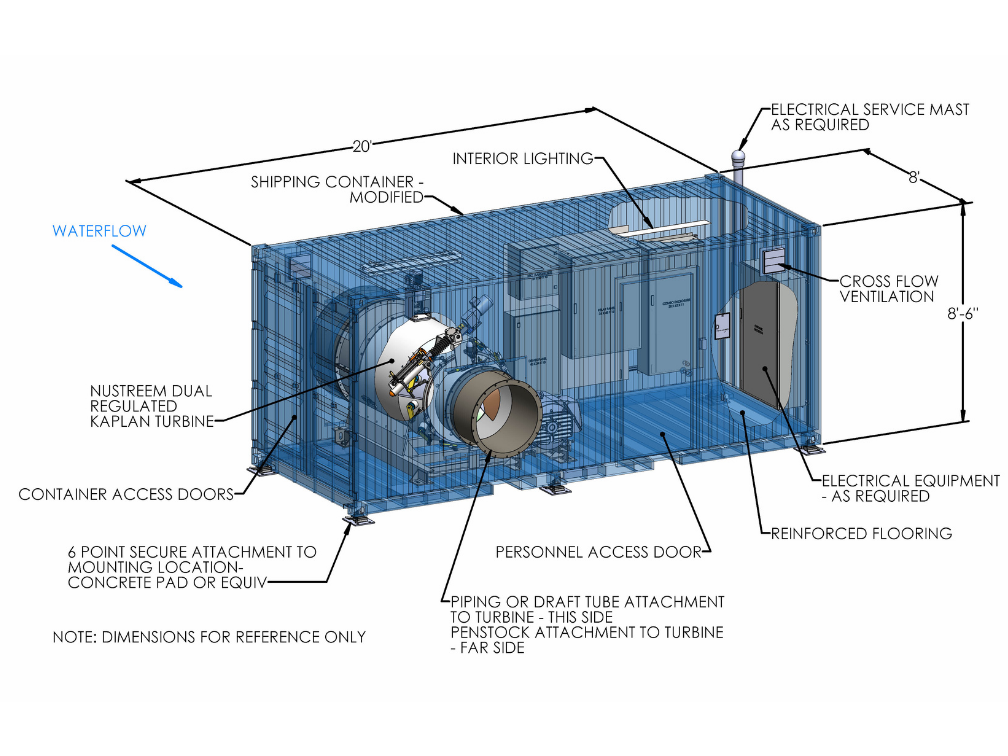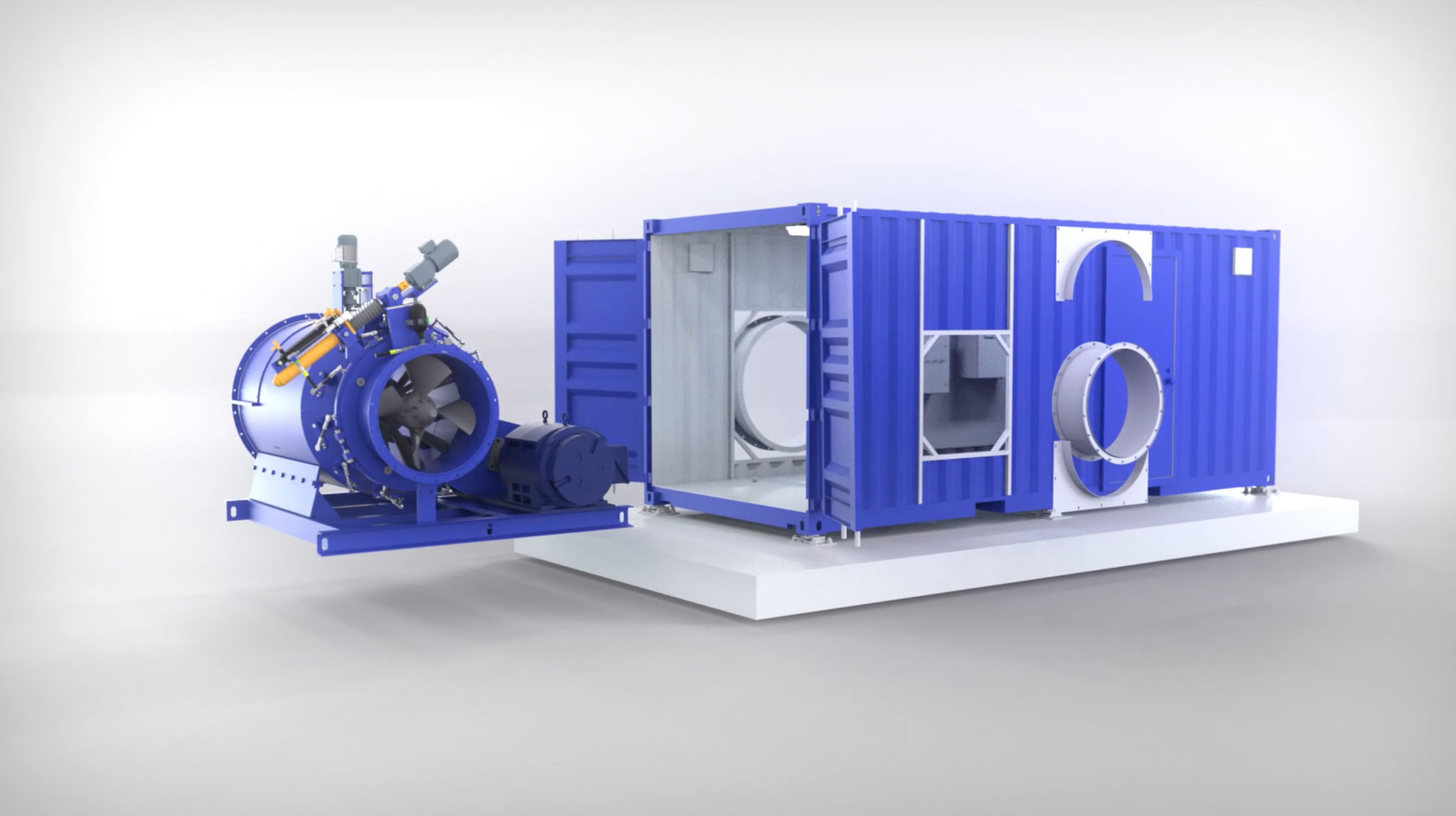Sponsored Content
The capital costs of small hydro development are often a deterrent to its expanded use. Few sites can reasonably overcome the upfront capital costs to generate a return attractive enough to appeal to investment.
To overcome these barriers, the market is driving toward modular and standardized approaches to hydroelectric generation.
The Deep Dive: Why High Capital Costs?
Hydropower, simply put, is electrical energy produced by moving water. Modern hydropower has been used to generate electricity for over 100 years and has the benefits of being a rapid, reliable, and flexible source of energy.
As long as there is a drop in elevation and flowing water, electrical energy can be produced.
In a typical run-of-river style plant, water diverted from the main stream enters the turbine through a penstock and propels its runner blades before being returned to the river through the draft tube to the tailrace. The spinning runner blades drive the generator to rotate, thereby producing electricity which can supply local loads as well as the grid.
Typically, the construction of a conventional hydropower plant – like the one described above – is a significant undertaking. Included as part of the construction project are:
- Excavation for aspects such as water storage, water passage, the dam foundation, and the tailrace
- Pouring of concrete to create the dam, water intake, and the powerhouse
- Extended diversion of water ways
- Building of the powerhouse
The project also requires a lot of design and logistics management. Examples: regulation compliance, material choice and availability, capability and quantity of construction labor, and construction equipment availability and administration.
All of these lead to significant project costs. And, for a hydro project generating relatively small amounts of megawatts (~less than 1 MW), it’s especially difficult to show a financial return on electricity sales attractive enough to appeal to investing in these upfront capital costs.
Site owners and operators are seeking to significantly reduce these costs and, through this, make small hydro a much more attractive venture.
Solutions to Reduce Costs
Development of modular and standardized approaches to development of small hydro is underway. Specifically, industry leaders are proposing solutions to address the phases of geotechnical site assessment and foundation construction.
A standardized and modular system considerably reduces the project effort, the schedule, and the capital required.
To make turbines portable and easier to install, we at NuSTREEM have developed the NuCONTAINER, an integrated, modular package in which multiple turbines are transported and can be installed in a standard-size shipping container.


NuSTREEM’s modular NuCONTAINER system makes the conventional custom-designed small hydro approach a thing of the past. A prefabricated standard shipping container is used in place of a classic powerhouse — a solution that substantially reduces foundational requirements, the extent of the civil design, and the resultant on-site construction.
One to three NuTURBINEs (a modernized Kaplan style design) are placed in a modified shipping container with the required grid interconnection equipment. Multiple containers can be used for a single site, encompassing a large variation of flows.
The modular system is built and tested at the factory and transported by truck to the site for installation. The reduced construction schedule and costs are significant using the readily available technology of the turbine and the modularity of the container.
For details, download the NuCONTAINER PDF overview.
NuSTREEM has two installed hydropower projects, both completed in 2014. One installation is beside NuSTREEM’s manufacturing facility and headquarters office, while the other hydro site is in Massachusetts.
Why It Matters
Using this approach, new small hydro sites can be developed as attractive options in creating clean energy while also making good economic sense. It is a proven, off-the-shelf, available structure that is inexpensive and easily transportable.
Almost anywhere small hydro is desired — both independent micro grid or as part of a larger grid-applied system — a modular system could be installed. Examples: irrigation canals, mining facilities, rivers and canals, conduits, existing mills, and factory sites.
The entire NuCONTAINER design is directed at the overall goal of making decentralized hydropower generation economically attractive. This incentivizes the growth of a technology that will provide society with a low-environmental-impact alternative to other power generation methods.
Anywhere there is moving water with a change in elevation, there is a possibility to use a modular hydropower solution.
What’s Next: Discussion at Clean Currents
The industry-wide conference and trade show, Clean Currents, in October 2021 will be an important time to continue in-person discussions about modular and standardized approaches to development of small hydro.
The entire industry will gather the week of October 18, 2021, in Atlanta, Georgia, for this new event. This new event promises to be the source for new ideas and innovation. According to the National Hydropower Association (NHA), the event’s owner/organizer, by attending Clean Currents, participants will remain on top of the latest industry developments as well as get a window into the future of the industry.
During Clean Currents, On Thursday, October 21, at 2 p.m., NuSTREEM is presenting in the Clean Currents’ Waterpower Intelligence Theatre. The topic: “Modern Innovations in a Classic Technology -What can Modular and Intelligent Hydropower Equipment Do?”
And, NuSTREEM is exhibiting in Clean Currents Central, #645. We look forward to connecting in person in Atlanta.











